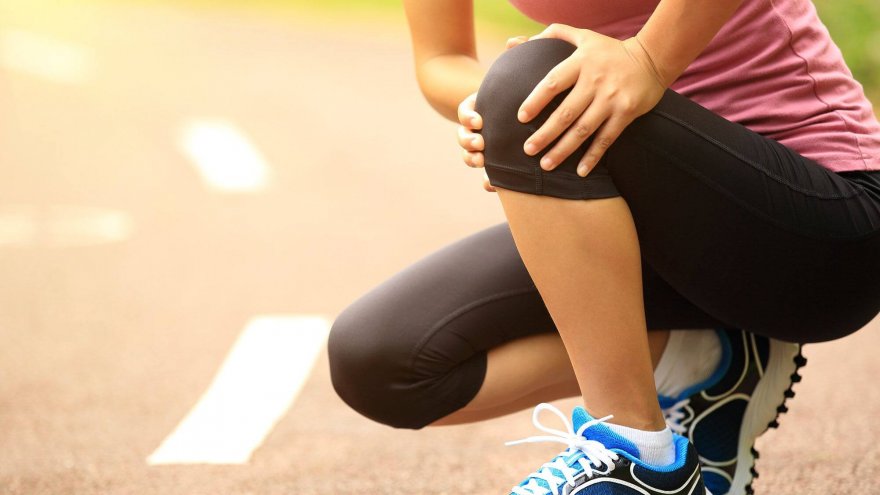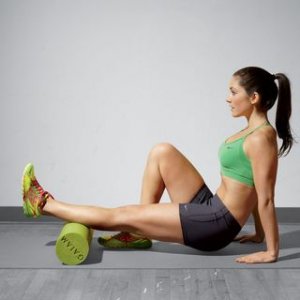Working Out When Sore: What You Need to Know

It’s bound to happen sooner or later. You have a hard workout and there you are the very next day, exhausted, looking ahead to the day you are in. What do you do when you’re muscles are super sore, but you still want to get a workout in? What about working out when sore? How do you get through the workout? Will that leave you even more sore the following day? All excellent questions.
What Causes Muscle Soreness?
After a hard workout, muscles sometimes get sore. Working hard causes microtears in the muscles, also known as delayed onset muscle soreness (DOMS). While muscle soreness can occur as soon as 6-8 hours post-workout, the discomfort can peak anywhere from 24-48 hours post-workout. This soreness can range anywhere from mild discomfort to pain that may have you feeling like you need a boot to get out of bed.

You may find this happens if you work out harder than normal, do a particularly vigorous workout, or work out significantly longer than you are accustomed to. Repetitive motions that your body is unfamiliar with can also cause soreness.
Gauging Your Activity
✓ If you are feeling just a little sore or stiff, it is probably safe to do light or moderate cardiovascular activity. Just be sure you don’t go from a complete stop to moving fast. Dynamic warm-ups are crucial.
✓ What about if you’re feeling pretty darned sore? Not gosh I can’t get out of bed sore, but hey, this kind of sucks sore. This is when you might want to consider a different type of exercise. If you typically run, going for a bike ride might be a good choice. Lap swimming is a great alternative.
✓ When you wake up and can’t roll out of bed, or you try to lift your arms to get something off the top shelf and want to cry, that’s another story. This might be when you need a rest day or just settle for a brisk walk. Just be warned that you may be even sorer the following day.
Cardio Activity Through Soreness
If you are sore, running slow and easy can actually help you to recover. Other forms of cardio can also help relieve your aching muscles. For example, a bicycle ride, slowly ellipticalling or a brisk walk are examples of a movement that may ease the sore muscles and help with recovery.
Some athletes spend time in the pool for relief from sore muscles. Easy lap swimming can help ease the discomfort. For runners sore from running, a very slow breaststroke offers comfort to the athlete. If you’re unfamiliar with the breaststroke, think kick like a frog. Since the breaststroke is 75% legs, it can help work the kinks out.

People who aren’t strong swimmers may find doing laps with a kickboard to be a nice compromise. You can also put on an aqua belt and water walk.
Weight Lifting Through Soreness
The rule of thumb for weight lifting when experiencing sore muscles is that you should be working a different muscle group. This is why most people who know their way around the gym vary their workouts to rotate the area of the body they are working.
Other Activities
When experiencing soreness there are some excellent alternative activities you can engage in. Becoming friends with your foam roller, for example, is a wonderful thing to do.

Another great activity is yoga. If you have never before practiced yoga, try it. It is a fantastic lesson in mindfulness, forces you to focus on your breathing, and helps increase your flexibility.
When Should You Take a Break…
If you wake up sore, things should improve as you move throughout the day. Assuming that is true, you may wish to engage in some easy activity. If you try to run slowly and the soreness gets more severe, you might need a rest day.
If you wake up sore and it doesn’t improve as the day goes on, you may need a recovery day. Another point to consider is that the soreness could be because of your running. Did you increase your mileage too fast? Have you pulled a muscle or twisted something wrong while running? If this happened, you maybe should take a break from running.
You should always make sure your soreness is coming from a muscle and not a bone. If you put pressure on the sore area and it seems to be the bone causing soreness, that could point to a stress fracture or other issue. A stress fracture can get worse if left untreated.
Easing the Discomfort
If your muscles are particularly sore, there are some things you can try. You can use an anti-inflammatory to reduce inflammation and discomfort. Some athletes find massage to be helpful. This can be either by visiting a professional or self-massage through a foam roller or marshmallow stick.

Depending on what hurts, ice or heat can be used to ease muscle pain. How do you know which to use? Generally, you use ice if you have actual pain or acute injuries. On the other hand, heat may be more helpful for soreness in the muscles.
So? Should I Work Out?
If you have soreness, there is not a clear rule on if you should work out or take a rest day. Every person is different, as is every situation. If you wake up and the discomfort does not improve, a rest day may be in order.
On the other hand, if movement helps to ease the pain or uncomfortable feeling in your muscles, movement may be just what the doctor ordered.
Just remember to slowly warm up your muscles and that it is okay to take it easy. Sometimes, slow and gentle movement is exactly what your body needs.
Sources
- , What You Should Know About Working Out When Sore, Magazine
- , Should You Exercise When You're Sore? , Magazine
- , Five Scientifically Proven Ways to Reduce Muscle Soreness, Magazine
Latest Articles
 Is Running on a Treadmill Easier Than Running Outside?Runners have their own preferences, whether it is treadmill running, running outside on the road, or exploring trails. So...
Is Running on a Treadmill Easier Than Running Outside?Runners have their own preferences, whether it is treadmill running, running outside on the road, or exploring trails. So... Is It OK to Use Trail Running Shoes on the Road?While trail running shoes can be used on roads, especially in situations where a runner encounters mixed terrains or pref...
Is It OK to Use Trail Running Shoes on the Road?While trail running shoes can be used on roads, especially in situations where a runner encounters mixed terrains or pref... How to Fix Sore Quads After Running?Rest, ice, gentle stretching, and over-the-counter pain relievers can help soothe sore quads after running. Also, ensure ...
How to Fix Sore Quads After Running?Rest, ice, gentle stretching, and over-the-counter pain relievers can help soothe sore quads after running. Also, ensure ... 10 Fruits With The Most Electrolytes to Replace Sports DrinksThese fruits are high in electrolytes such as potassium, magnesium, and calcium, essential for hydration, muscle function...
10 Fruits With The Most Electrolytes to Replace Sports DrinksThese fruits are high in electrolytes such as potassium, magnesium, and calcium, essential for hydration, muscle function...

